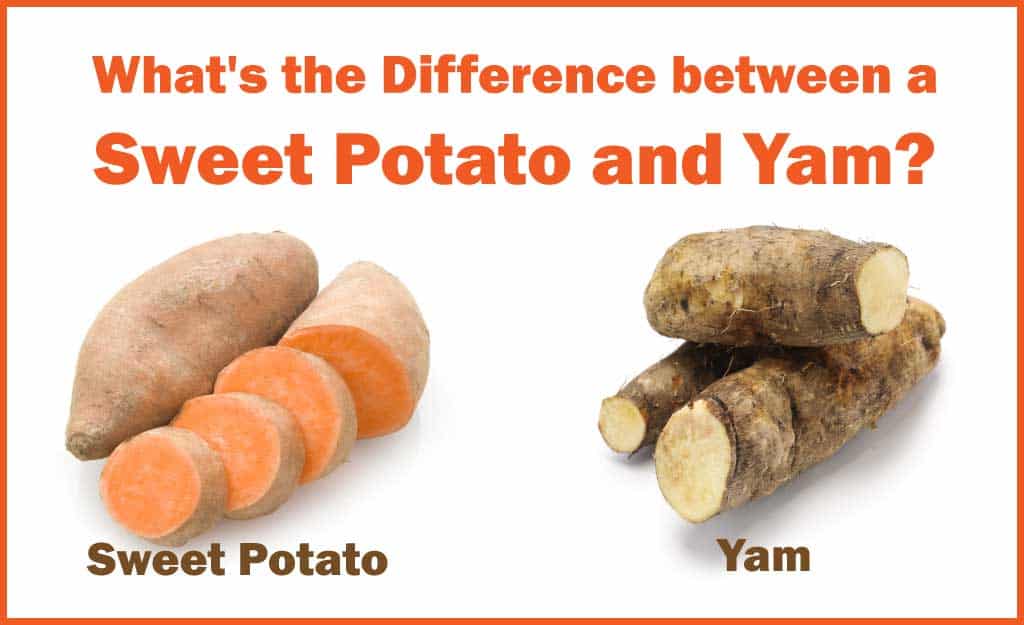So, what is the difference between sweet potatoes and yams and why have the words been used interchangeably in America for all these years? That is what this article will discuss, and you might find the story of these two tuber vegetables and how their names have become interchangeable to be an interesting American history lesson.
Yams have a rough brown exterior with a hard, dense, and white interior and they are starchy and usually not very sweet. Sweet Potatoes have a smooth exterior that can be many different colors such as yellow, red, purple, and brown and their interior can be orange, white, or purple and they taste moist and sweet when cooked.
What Are They?
Yams and sweet potatoes are both called tubers or roots. A tuber comprises the thickened stem of the upper part of the root that lies underground beneath the plant itself. So in that sense yams and sweet potatoes are like the russet potatoes that we commonly use for mashed potatoes or french fries.
As tubers yams and sweet potatoes have many shared qualities with their other tuber kin. They are both relatively dense (although they differ in this way when compared to each other), and they both have the odd root-like form that tubers share. They can look misshapen and lumpy, just like something pulled up from the ground!
Both sweet potatoes and yams have an elongated shape, more so than russets, and can grow to a longer length as well, though yams are the most likely to win the contest of overall length because they can get up to five feet long. They can weigh quite a bit as well, while sweet potatoes do not grow to that extent.
Yams and sweet potatoes originate from different parts of the world. Yams come from West Africa and Asia, while sweet potatoes originated in Central and South America. They also have their origins with different plant families. The sweet potato comes from the morning glory plant while the yam comes from the lily plant.
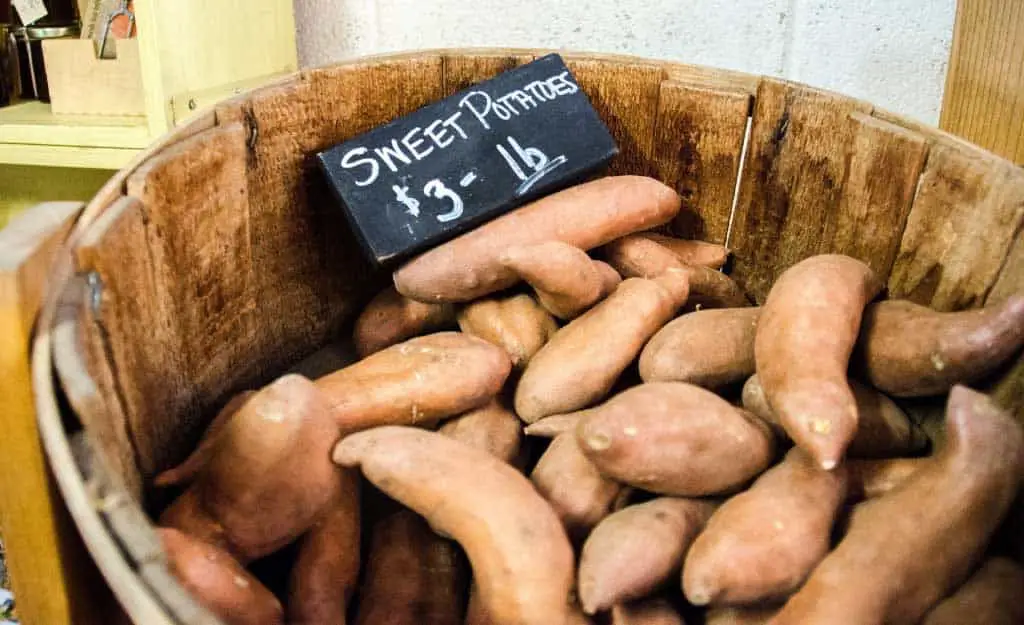
And the Difference Is . . .
But yams and sweet potatoes are different from each other, just like they are different from russet potatoes. Yams are a tough and hardy tuber. These days they are commonly found in West Africa, the Caribbean, Latin America, and Asia. Yams have:
- A rough, brown exterior, somewhat like a potato in appearance, but with more of a scaly kind of texture
- A dense, hard, and white interior
- A taste that is more like potatoes, having a starchy and dry quality to it
Sweet potatoes on the other hand are what you are used to having with sweet and tempting dishes. Sweet potatoes have:
- A smooth skin (like red potatoes) that can be many different colors from yellow and red to purple and brown
- An interior that ranges from white to purple to the one that we are most familiar with: orange
- A moist and sweet taste when cooked
In other words, even though we use the words interchangeably, yams and sweet potatoes are quite different. If you tried to use yams for your Thanksgiving dish that normally requires sweet potatoes, you would find the taste to be quite possibly unappealing.
The yams would not have the moist and sweet complement that the dish requires. It would taste more like using yucca for the dish. And in fact, you would likely not be able to even find real yams in most grocery stores. So to be clear, you need sweet potatoes, not yams for a happy Thanksgiving.
The Difference Nutritionally
Since they are different vegetables, it makes sense that raw sweet potatoes and yams have a slightly different makeup, although with similar materials. They also both contain very little fat, but they have other differences in their makeup as well as differences nutritionally that give them different benefits. Here is how it breaks down:
| Sweet potatoes | Yams | |
| Water | 77% | 70% |
| Carbohydrates | 20.1% | 24% |
| Protein | 1.6% | 1.5% |
| Fiber | 3% | 4% |
As you can see, the vegetables differ in their water and carbohydrate content. Otherwise, they are quite similar in terms of protein and fiber. Here are some impressive nutritional contrasts between equal cooked portions of the two tuber vegetables.
| Sweet Potatoes | Yams | |
| Carbohydrates | 20.7% | 27.5% |
| Calories | 90 | 116 |
| Vitamin A | 384% | 2% |
| Vitamin C | 33% | 20% |
For sweet potatoes the vitamin A percentage is out of the park (which is probably because of its high beta carotene content), and it is also a good source of vitamin C. But the tubers share comparable offerings of the other vitamins as well as of the various minerals such as potassium, manganese, and magnesium.
So while the roots are very different in taste and some aspects of their composition, they also share some commonalities in their makeup. It is interesting to note that different roots provided some similar nutritional elements to the different parts of the world where they originated.
The Sweet Potato and Your Health
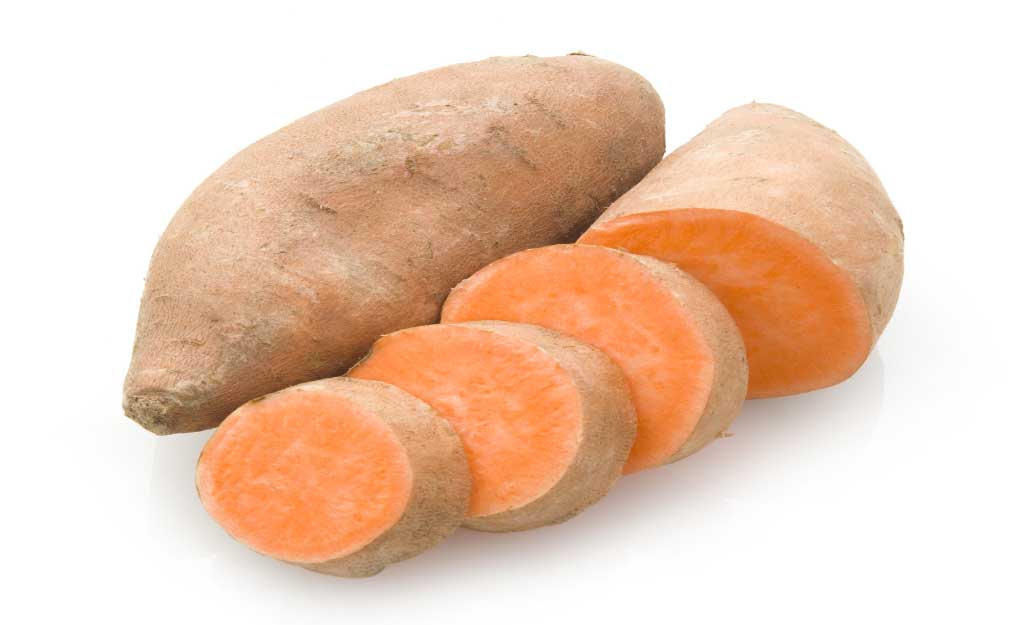
It has been determined that the same sweet potato that is the basis for a particularly sugary Thanksgiving dish can actually have some positive effects on your health. Surprising given the role it plays in many people’s November weight gain. Nevertheless, sweet potatoes are high in:
- Antioxidants
- Carotenoids
Carotenoids are actually a kind of antioxidant and they are related to the sweet potato’s high vitamin A percentage and bolster your immune system. Additionally, they are believed to be especially beneficial against cancer and heart disease. This gives the sweet potato a big thumbs up in the American diet.
Sweet potatoes are believed to reduce the bad kind of cholesterol in your system and also help keep your blood sugar stable. Of course, as it relates to the sweet potato’s most popular serving, some of these benefits may be canceled out by the other ingredients. But on its own, the sweet potato can do a lot for your general health.
The Yam and Your Health
The health benefits of yams have not been studied to any great extent, but you can draw some conclusions based on what is known about the yam. Yams have a little more potassium and manganese than sweet potatoes which means that yams can help with your bones and the function of your heart as well.
Yams also have a broader glycemic index (GI) which means that yams can either quickly or slowly change the rise of your blood sugar depending on how they are prepared. Both roots have a broad GI:
- Yams: 35 – 77
- Sweet potatoes: 44 – 96
But the position of the range of yams, low to high, gives it the biggest possibility to change the rate of rising blood sugar, unlike sweet potatoes whose GI is mostly in the medium to high range.
The Difference in How They are Prepared
Since yams are less readily available it might not be so easy to make a comparison of the two by cooking them. Even so, both tubers can be prepared in a variety of ways. They can be boiled, baked, roasted, or fried.
You can puree sweet potatoes for soup and mash them as well. They also make a popular alternative to fries because of their inherent health benefits.
Yams on the other hand, in places like Africa and Asia, are boiled, fried, or roasted most often. They can last a long time after they have been harvested so are often used in developing countries as a staple for difficult years when food is hard to come by. One West African people group, the Igbo, has a festival celebrating the yam.
Sweet Potato Dishes
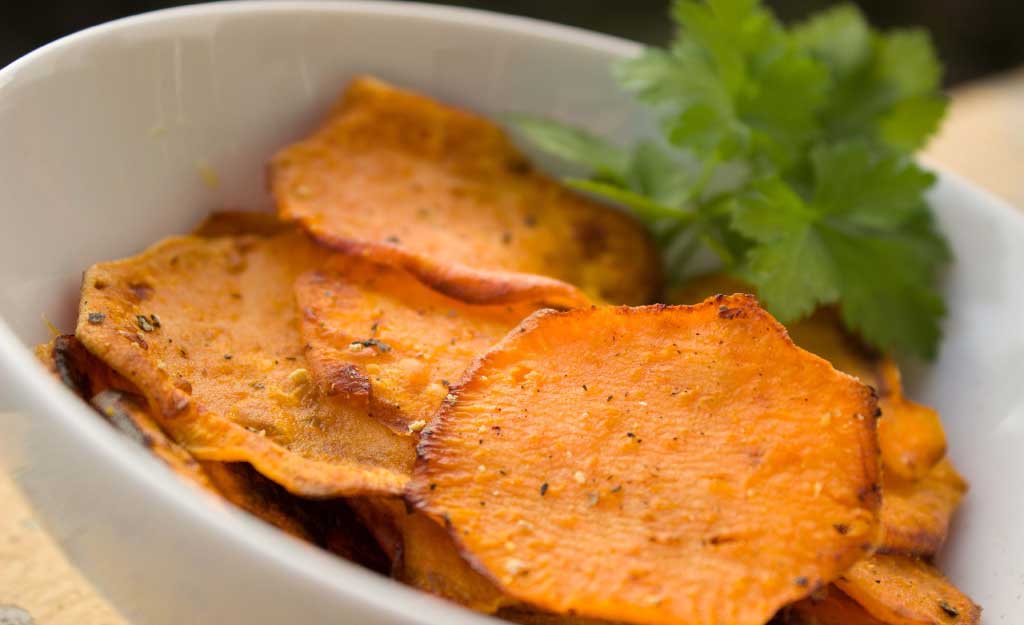
Recipes for sweet potatoes proliferate on the internet to such an extent that you will find them even when you search up recipes for yams. That is how difficult it is to disassociate the two words. So you can find some great sweet potato recipes even when you don’t want to.
By far the most popular dishes involving sweet potatoes are those that you eat during Thanksgiving. These are casserole dishes that put the sweetness of the orange potato in the context of sweet sauces and other sweet foods such as apples or marshmallows (which are probably the biggest detractors of the sweet potato’s health benefits).
But sweet potatoes are more versatile than that. They can be eaten raw to get all the nutrients from them. Or you can bake them and eat them much like you would a russet potato with a big dollop of butter on top. Add some simple salt and black pepper and you are good to go.
You can experiment with stuffing your sweet potatoes with various ingredients to compliment its natural sweetness. Sweet potatoes can also be diced up and roasted or even fried. For these methods, sweet potatoes make a great and healthy alternative to the high carb and super starchy American staple of the russet potato.
Yam Dishes
As was mentioned earlier, it is harder to get recipes for yams, about as hard as it is to get actual yams at a standard grocery store. If you do get your hands on some yams, remember that, unlike sweet potatoes, most varieties of yams cannot be eaten raw. So, you will need to cook before consuming.
Yams are most often boiled or roasted, but they can also be fried. Before cooking them, you should peel off the skin. Unlike yams or sweet potatoes the skin is not edible, nor would you want to eat it. However, you cook them, yams are best paired with other food because of their dry and starchy taste.
You can try different sauces with them or put slices of fried yams with barbequed meat dishes, for example. The world of real yams is mostly unexplored territory here in the United States, so, if nothing else, Yams provide the opportunity to discover some new culinary connections.
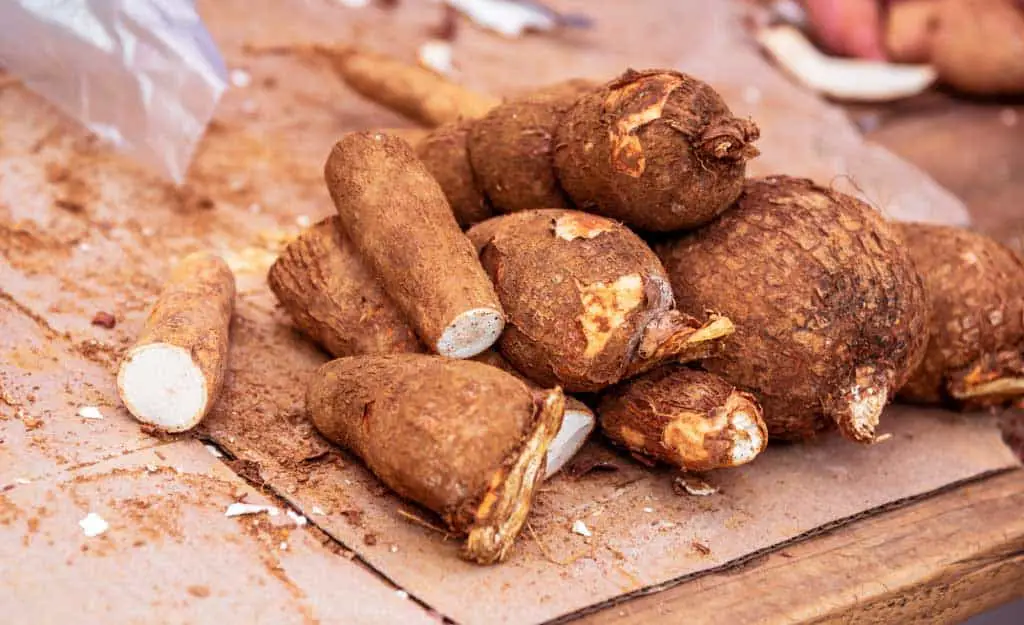
The Two Tubers Have Been Misunderstood for Years
If the two roots are so different, then why have Americans been calling sweet potatoes yams for all these years? Even the United States Department of Agriculture (USDA) demands that any label that has the word “sweet potato” on it, must also be accompanied by the word “yam.”
Is it a conspiracy? Surprisingly the answer is not exactly no. While it is not a government conspiracy the likes of which would make a good film, the confusion of the two words is most likely due to the conspiratorial efforts of Louisiana sweet potato growers back in the 1930s.
Getting Ahead of the Competition
The growth of sweet potatoes became a money-making proposition in the early 1900s as the vegetable began to develop a faithful following among the American public. Most sweet potatoes, which, at this time, had a white interior, were grown on the east coast, but some were also grown in Louisiana.
In the 1930s a researcher at the Louisiana Agricultural Experiment Station named Julian C. Miller developed a new strain of the sweet potato. In this strain the potato was:
- Orange
- More moist
- Softer
And it had these qualities above and beyond the varieties that people were used to. It was also high in vitamin A. In other words, it was the sweet potato that we know and love today.
The Louisiana growers knew they had a hit on their hands, but they wanted to market it in a way that would give it a distinction above and beyond the normal sweet potato. So, they decided to market their new variety as yams. Thus the popularity of the sweet potato grew along with its misnomer.
Now we can’t get rid of the name yams even though the orange sweet potato was never of the yam variety. Sweet potatoes are grown commercially in Merced County, California, and California growers are trying to change the name of the root back to what it should be.
A Long History
Sweet Potatoes and yams actually have a long relationship together that goes back to the dark history of the American slave trade. As you will see, for cultural reasons, this history further complicates the association of one tuber for the other.
Because yams were a staple in West Africa where men and women were taken as slaves, ships’ masters would store yams aboard (along with black-eyed peas) to feed them on the long and horrible trip west across the middle passage of the Atlantic Ocean.
When they got to America, yams were not readily available, but white-fleshed sweet potatoes were. Slaves then began to use sweet potatoes in place of yams for dishes that had both cultural and spiritual significance to them. The sweet potato took on the cultural role as a kind of adopted yam.
Through the sweet potato, Slaves could hold onto some semblance of home and their former customs. Somewhere along the line, their language even adapted. The West African word for the tuber of their homeland is variously:
- Enyame
- Nyami
- Nyam
The difference depends on the language, but all of them got shortened to “yam.”
The Travels of the Sweet Potato
The yam was not the only root to make a trek across the Atlantic. When Christopher Columbus was shown the sweet potato he was enamored enough with it that he took some with him back to Spain. The tuber’s smooth texture and sweet taste were thought to have many benefits and became popular in Europe being simply called potatoes.
When these potatoes made the trip back across the Atlantic, they went with colonists to what would become America. By 1740 the American colonists began to refer to them as sweet potatoes. This way they could tell them apart from the russet potatoes that came to them from Ireland.
Sweet potatoes may have made an even longer and stranger journey than that, and hundreds of years before Columbus set his eyes on them. Archeological evidence points to ancient remnants of the tuber in modern-day Polynesia.
So somehow, and in some way, the sweet potato made its way across the Pacific Ocean. Did Polynesians make the trek in large catamarans to get it? Did the sweet potato get tangled up in traveling kelp and go to them? No one knows for sure, but it is clear that, like yams, the sweet potato has been around the block.
Conclusion
In the final analysis, yams and sweet potatoes bear more differences than similarities. They originated in different parts of the world and they retain different qualities about them. The sweet potato is softer and sweeter. It also seems to have more dramatic varieties than yams, coming with both orange and purple exteriors and interiors.
Yams, on the other hand, are tough tubers and have white flesh and lumpier skin. They also have a starchier taste than sweet potatoes. They can last a long time after being picked, which is perhaps why yams are celebrated in their home cultures for being durable through hard times.
Sources:
https://www.healthline.com/nutrition/sweet-potatoes-vs-yams#TOC_TITLE_HDR_6
https://blogs.loc.gov/inside_adams/2010/11/a-sweet-potato-history/
https://www.capradio.org/articles/2017/11/21/the-myth-of-the-american-yam/
https://www.delish.com/cooking/recipe-ideas/recipes/a55377/perfect-baked-sweet-potato-recipe/

